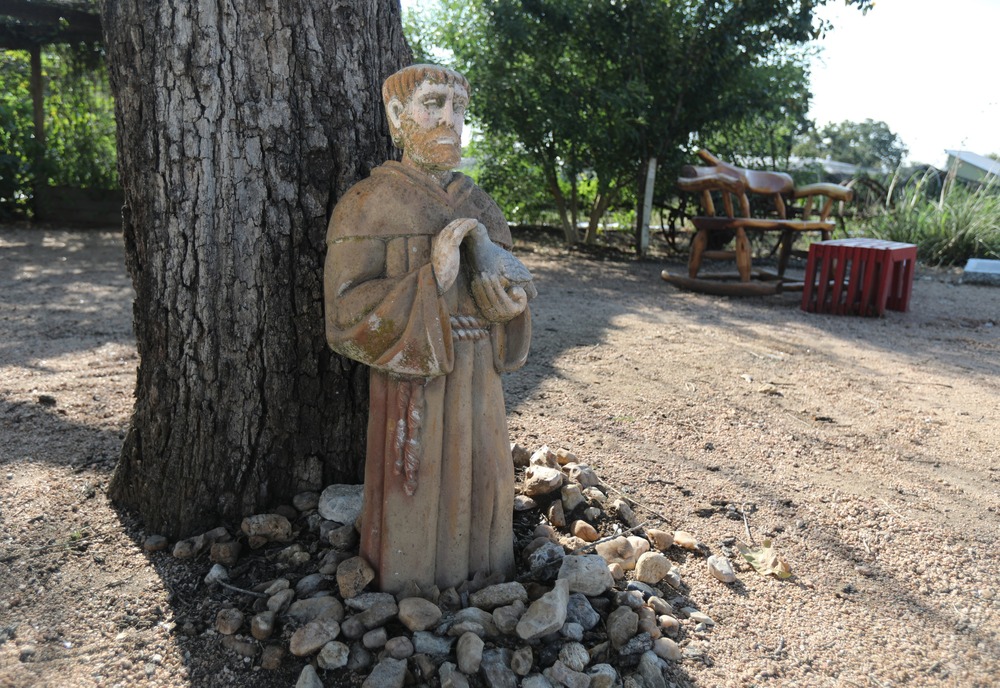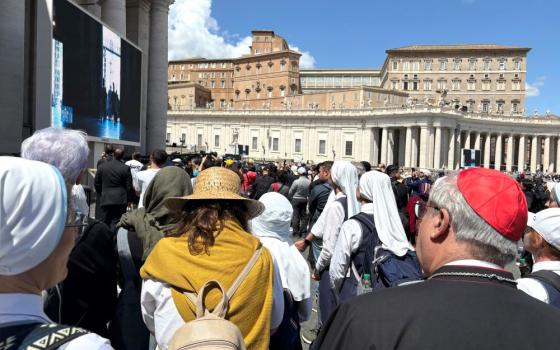
A statue of St. Francis of Assisi is seen in a garden at Community First! Village in Austin, Texas, Sept. 9, 2021. (OSV News/Bob Roller)
Out in my perennial garden, nestled among the bleeding hearts and hyacinths, stands a well-worn clay statue of St. Francis of Assisi made by an artisan in Mexico. The unusual characteristics of the statue make it a conversation piece as well as a spiritual touchstone that helps keep me centered as I dig and weed and plant each spring.
Of course, I'm not alone. Drive down any street and you're likely to find St. Francis peeking out from both well-manicured lawns and wildflower gardens run amuck. He is just as likely to share a garden with a statue of Buddha as he is to share one with a statue of the Blessed Mother.
He is a saint of the people — all people, Catholics and non-Catholics alike. His broad appeal is fascinating, but at the same time it begs the question: Do those who plant St. Francis in their gardens really know what the medieval saint was all about?
Today Francis' concerns are often compartmentalized, separated from true Franciscan spirituality by well-meaning folks who want to claim him for their own. And who can blame them? He is certainly a challenging yet endearing saint for the ages.
Environmentalists jump on Francis' love for creation, his "Canticle of Brother Sun," his diligence in protecting trees and even "brother" fire, and find in him a kindred spirit.
Animal lovers hear stories of him preaching to birds and taming a wolf and see in Francis the kind of saint who has rightly earned his status as patron of animals. His popularity comes into full view every Oct. 4, when adults and children alike line up outside churches with everything from goldfish swimming in glass bowls to German shepherds straining at leather leashes just for a chance to get their pets a blessing on Francis' feast day.
Peace activists, interreligious leaders, social-justice organizers — the St. Francis fan club goes on and on. It seems everyone can find a piece of Francis to suit their cause. But, if you put all of those individual causes into the Gospel context that was at the heart of Francis' rule and spirituality, you come away with a very different picture of our lovable saint, one that is not so easily shaped and molded by the latest trends in activism.
Advertisement
Would we see quite so many St. Francis lawn statues if people stopped to reflect on the fact that Francis' life was one centered on his love of Christ, his commitment to a radical living out of the Gospel, and his "marriage" to the bride he dubbed "Lady Poverty"? The path that St. Francis chose was not an easy one. He was ridiculed and mocked as a madman during his own lifetime for what appeared to be an extreme response to his conversion experience.
He renounced his family's fortune, fasted for days on end, heard the Lord speak to him from a cross in San Damiano, bore the stigmata. He lived and died for Christ. It would be a disservice to him and all he stood for to try to slip a politically correct mask over the spiritually devout saint who did not do anything halfway.
Sometimes I wonder how I can possibly weave Francis' difficult and often uncomfortable lessons into my exceedingly comfortable existence. How do those of us with warm homes and busy jobs and nice clothes make St. Francis into something more than a decoration or a mascot?
It's not easy, but maybe, just maybe, seeing St. Francis from the kitchen window as we wash dishes, or when we rake leaves from around his feet as we clean the yard, will call us back to our spiritual center and remind us that what we do here on this earth cannot be separated from what we long for in heaven.






